O’Kelly Sicilian: Complete Guide
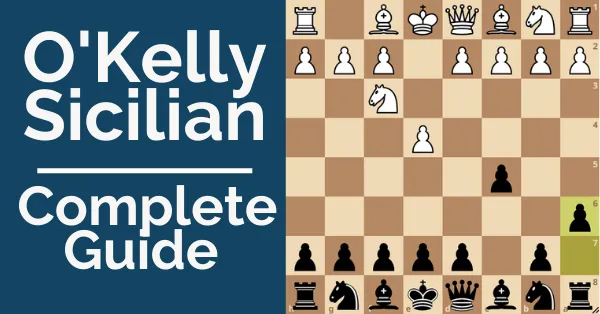
O’Kelly Sicilian is a great variation of the Sicilian Defense when you don’t have so much time to study its theory.
Chess has always been a fascinating game. When you see brilliant minds silently competing over the board, it is not even necessary to know the rules to get excited. Many people study chess hard. But one should never forget what brought them to this game. The joy of playing and the striving towards improvement are among the most common reasons. Also, everyone seems to love winning.
To play for a win as Black, the Sicilian Defense is one of the best options.
But what if you don’t have that much time to study its theory? Then, you should probably consider the O’Kelly Variation. It is not as common as the Najdorf or the Dragon, so you could possibly surprise many of your opponents by choosing this line.
Among strong grandmasters, the O’Kelly has been frequently used by Vladislav Artemiev, Richard Rapport, Dmitry Andreikin, Hou Yifan, Nikita Vitiugov, and others.
The O’Kelly Sicilian arises after 1.e4 c5 2.Nf3 a6.
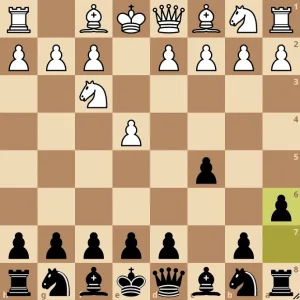
Black’s last move is generally useful in the Sicilian. You can see it played in the Najdorf (1.e4 c5 2.Nf3 d6 3.d4 cxd4 4.Nxd4 Nf6 5.Nc3 a6), the Kan (1.e4 c5 2.Nf3 e6 3.d4 cxd4 4.Nxd4 a6), and many other variations. This move takes control over the important b5-square and lets Black later gain counterplay on the queenside by playing …b7-b5.
What is the point of playing 2…a6 right now? The idea is quite tricky. Black has committed neither for …e7-e6 nor for …d7-d6 yet. This turns out to be highly beneficial for them if White goes for the Open Sicilian with 3.d4.
White opens the center against the O’Kelly Sicilian.
3.d4 is rarely played in the O’Kelly among high-rated players, but at the club level, this is the most popular move.
The explanation is simple. The O’Kelly is not a very popular variation of the Sicilian, and people react to it the way they would react against more common moves. In this particular case, it is not the best strategy.
After 3.d4 Black can play 3…cxd4 4.Nxd4 Nf6 5.Nc3 e5!
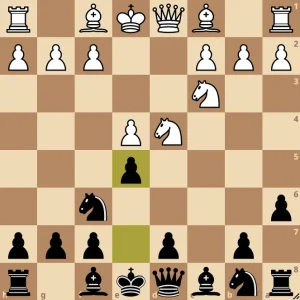
The pawn push …e7-e5 is typical in the Sicilian. You can see it, for example, in the Classical Variation:
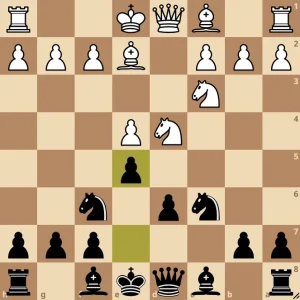
Note that Black’s dark-squared bishop is restricted by the d6-pawn here. White usually retreats with 7.Nb3 or 7.Nf3.
This pawn push is also the cornerstone of the Sveshnikov Sicilian:
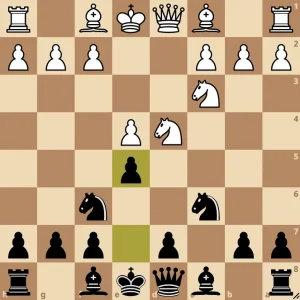
Here the bishop is not restricted. White’s 6.Nb3 would be met by 6…Bb4, followed by …d7-d5 with a great game for Black. This is why against the Sveshnikov, White’s strongest move is 6.Ndb5, threatening to jump on d6. This forces Black to play 6…d6, blocking the bishop.
Now let’s get back to the O’Kelly position. The dark-squared bishop is not restricted and the b5-square is covered. So after White’s 6.Nb3 or 6.Nf3, Black can play 6…Bb4!
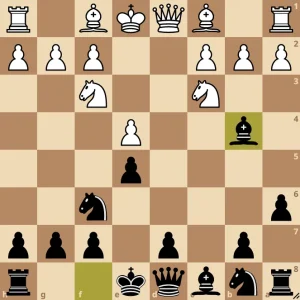
The pin is annoying for White. Black is threatening to double White’s pawns, capture on e4, or free the center with …d7-d5. If White plays 7.Bd3, after 7…d5 8.exd5, Black can already win a piece with 8…e4!
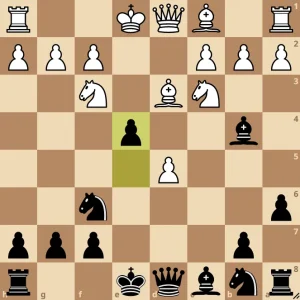
According to the lichess database, this has happened in more than 5000 online games!
There’s no fork like that after 6.Nb3 Bb4 7.Bd3:
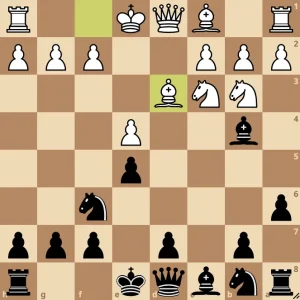
According to the lichess online database, Black’s most popular move here is 7…d5. Nevertheless, the best seems to be to go for another plan: 7…Bxc3! Black damages White’s queenside pawn structure and plans to exploit it. The following moves can be kingside castling, …d6, …Qc7, …Be6, …Nbd7, …Rc8, etc. In practice, Black has better chances.
It is worth mentioning that 6.Nf5 fails to 6…d5!
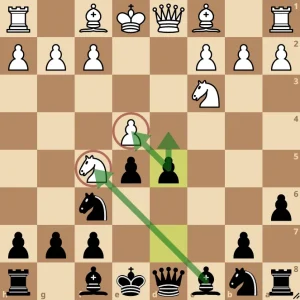
You may ask how that is possible that White stands worse after the opening. The thing is that White’s move 3.d4 didn’t aim to exploit any drawbacks of 2…a6. Instead, it gave Black a better version of the Sveshnikov Variation idea.
White’s best chance seems to be to deviate from the Open Sicilian and opt for a sideline. The point is that Black’s 2…a6 can turn out to be a waste of time in those positions.
Traditionally, White’s main tries for an opening advantage are 3.c3 and 3.c4.
White meets the O’Kelly Sicilian in the Alapin style.
The Alapin Variation starts after 1.e4 c5 2.c3. This is a good and popular move. White plans to build a pawn center with d2-d4. After 3.c3 in the O’Kelly, White gets the Alapin kind of positions, but with the moves Nf3 and …a6 included. This is generally in White’s favor.

Black usually tries to reply in a way they would reply against the Alapin Sicilian. 3…d5 is the most common move. There is also 3…e6 that leads to the French type of positions. After 4.d4 d5 5.e5, we transpose into the Advanced French. Black’s most popular move is 5…Bd7, planning to make use of the a6-pawn and trade the light-squared bishops.
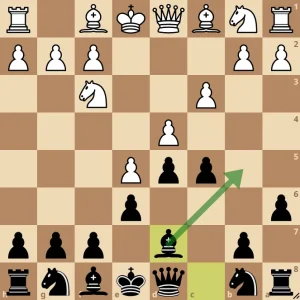
The trade of the light-squared bishops is generally good for Black in this pawn structure, but it is also time-consuming. Instead, Black can develop their pieces and play regular French-style positions.
After 3…d5 4.exd5 Qxd5 5.d4,
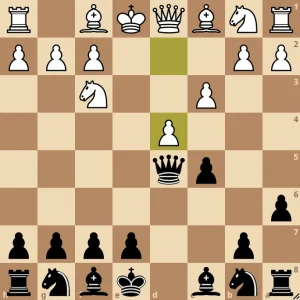
Most likely this will lead to typical positions with an isolated pawn on d4 for White. Black has two ways: to develop the light-squared bishop to g4 or to leave it on c8 and play …e6. Both plans were many times used by Vladislav Artemiev. Overall, White’s positions are preferable, but Black is solid and has chances to exploit the weakness of the isolated pawn.
You can see one of Artemiev’s blitz games in the viewer below:
White meets the O’Kelly Sicilian in the Maroczy style.
3.c4 is also a strong move. White is getting a firm control over the center and plans to play d2-d4.
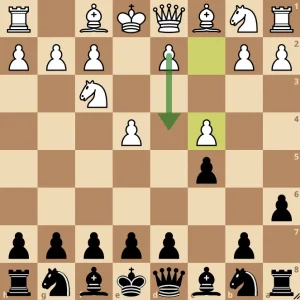
Black has two main plans: going for the Hedgehog or playing for …e7-e5.
The Hedgehog is a system of development that is characterized by the humble placement of the pawns on the sixth rank. The pawns are controlling the center and protecting the position. The pieces hide behind these hedgehog spikes of a hedgehog and regroup for a potential counterattack.
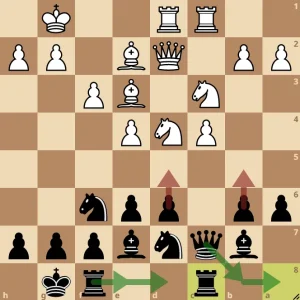
This is what a typical Hedgehog position looks like. Black has a lot of plans. The main ones are those involving …d6-d5 or …b7-b5 pawn breaks. White has a lot of space, but Black’s position is solid and hard to crack. If White is not careful, Black can seize the initiative and hit the first player’s overextended position hard.
The other approach is to play 3…Nc6 4.d4 cxd4 5.Nxd4 e5.

Black would love to develop the dark-squared bishop to an active position and castle kingside. This kind of position is typical for the Kalashnikov Variation of the Sicilian. Again, White generally has more space, but Black’s position is solid and hard to break. Both sides should keep in mind that the d4-square can turn into a great outpost for a Black knight.
White makes a waiting move 3.Nc3.
With the O’Kelly, Black tricks White into playing something different from the Open Sicilian. But actually, White can insist with 3.Nc3.
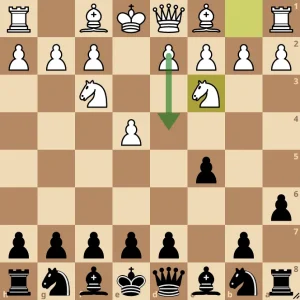
Unfortunately, Black doesn’t have a good waiting move now. If they play 3…Nf6, it will be met by 4.e5. The move 3…Nc6 is possible. But after 4.d4 cxd4 5.Nxd4 e5 6.Nf5, Black no longer has the …d7-d5 pawn thrust.
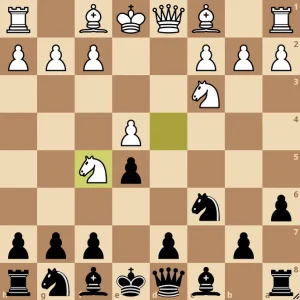
Black will have to play 6…d6. There is no longer the great d4-square for the knight to help with counterplay, so it is probably better to avoid getting into this position in the first place.
The best Black can do is to transpose into one of the regular Sicilians: to the Najdorf after 3…d6 or to the Kan after 3…e6.
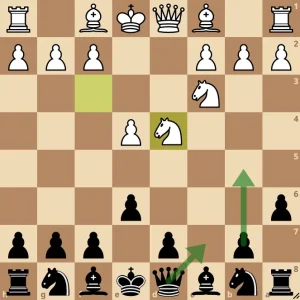
This may not be everyone’s cup of tea to have to play another Sicilian variation, but here White has already committed the knight to c3. This reduces their options: the most dangerous setups against the Kan usually involve the move c2-c4. That means Black can be satisfied too. The most popular moves here are 5…Qc7 or 5…b5. The arising positions are solid for Black and give good chances for obtaining active counterplay in the future.
We also recommend reviewing World Chess Championship Match 2021: What You Should Know.
Conclusion
The O’Kelly Variation is quite an interesting choice. It is fairly easy to learn and can give Black good chances in practice. At the club level, White mostly reacts with 3.d4, which gives the second player a great game. The O’Kelly is especially good for those who already play the Sicilian but would love to add some variety and to be trickier from time to time.
Learn how to Win with O’Kelly Sicilian:
https://thechessworld.com/store/product/win-with-okelly-sicilian-with-fm-zaur-tekeyev/





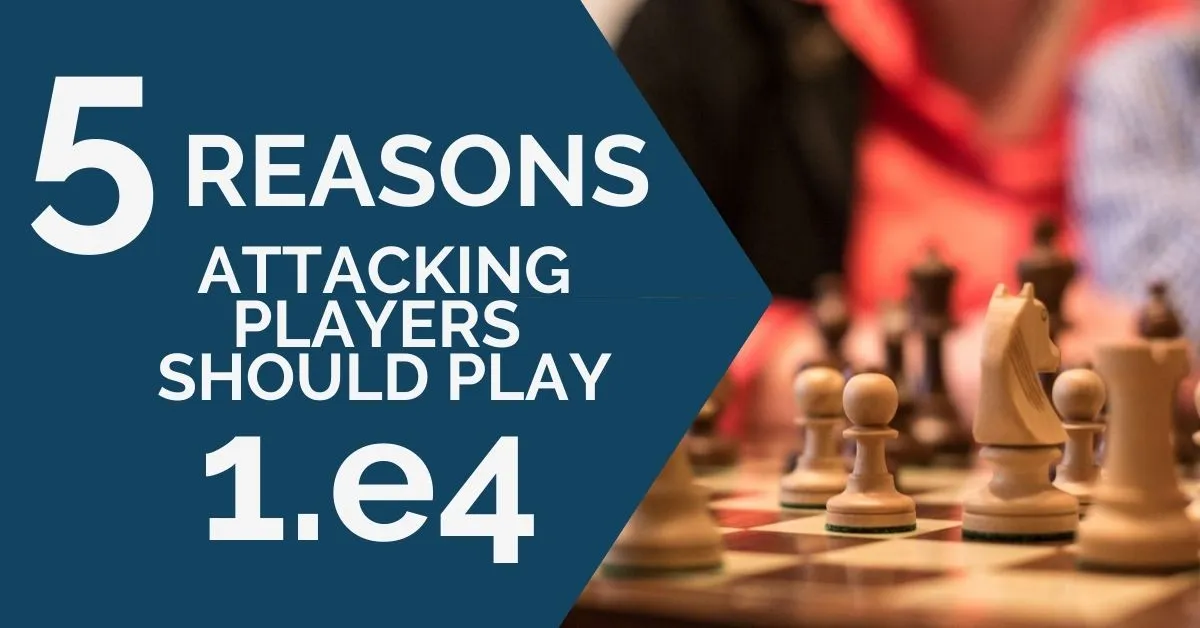




Comments: